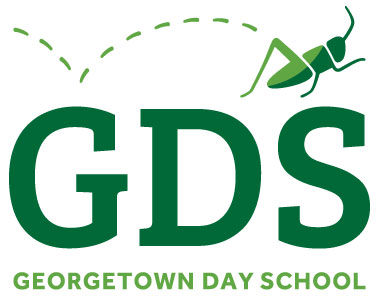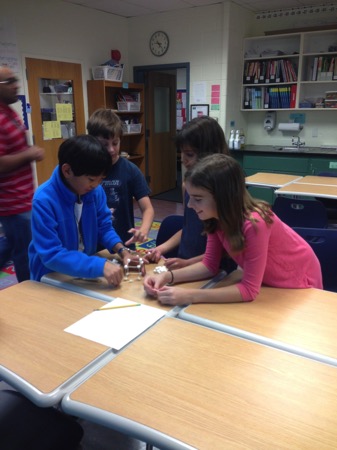At Georgetown Day School, you might have heard your child’s teacher or other member of our school community talking about our emphasis on the “whole child” or how when we stress students’ development, we are not just focusing on developing academic aptitude. We also focus on developing students’ self-confidence, positive engagement, concern for others, effective problem-solving, and perseverance. These skills and capacities are part of our social emotional learning (SEL) program.
SEL at GDS encompasses three key areas: 1) self-awareness and self-management, 2) social awareness and relationship skills, and 3) decision making. These areas are a central focus of a GDS education; we address them both implicitly and explicitly throughout our school days, starting from the first day of school.
With Responsive Classroom (an approach to classroom learning that combines academic and SEL by emphasizing connectedness and understanding), teacher and counselor lessons, and as the need arises, we support students as they navigate personal reactions and interpersonal interactions with others. Students are guided to identify effective strategies to manage feelings, manage conflicts, promote positive communication, and foster strong relationships with peers. We maintain age-appropriate expectations and build SEL in intentional ways that are consistent with our belief that these skills are as important as students’ academic development.
Resources
Lower School Students
- Kimochis and their story books are often used by the counselor with Pre-Kindergarten and Kindergarten students.
- Moody Cow is one example of a book used to talk about mindfulness. There are other great books for children on mindfulness and yoga too.
- Books by Julia Cook cover a range of topics and are used with First graders and up.
- Worry Woos are cute, catchy and have stories about a variety of feelings and circumstances students may experience. These stories have primarily been used with 1st–3rd grades.
- The 7 Habits of Happy Kids has been used with 3rd–4th graders.
- The book, Making a Splash, has been useful, even with 5th graders, to talk about developing a growth mindset.
For parents
Self-Awareness and Self-Management
This realm of SEL includes a student’s ability to recognize emotions and thoughts as well as how they influence behaviors—both critical to children’s wellness. How do students manage stress? How do they motivate themselves? How can they use words to label their feelings? For example, if a teacher notices that a student is reluctant to ask questions or try something new, the teacher might talk with the student to help them identify how they are feeling and what they might do to feel better when they do attempt something new.
Social Awareness and Relationship Skills
This area of SEL includes the ability to take the perspective of and empathize with others from diverse backgrounds and cultures, to understand social and ethical norms for behavior, and to recognize family, school, and community resources and supports. In addition, it includes students’ ability to establish and maintain healthy and rewarding relationships with diverse individuals and groups. We work with students on skills like communicating clearly, listening actively, cooperating, resisting inappropriate social pressure, negotiating conflict constructively, and seeking and offering help when needed. In the classroom, students gain independence in partner and group work, using communication and collaboration skills. When conflict arises, students are encouraged to repeat what the other person has said to build their understanding of another’s perspective.
Responsible Decision Making
When working with students on developing this area of SEL, we focus on their ability to make constructive and respectful choices about personal behavior and social interactions. These choices are based on consideration of ethical standards, safety, social norms, the realistic evaluation of consequences of various actions, and the well-being of self and others. How can I keep me and my community safe (emotionally and physically)? This area of SEL includes the previous two categories to inform the best decisions to make for oneself rather than blindly following others.
Across the school, all three counselors are working together with faculty to ensure that SEL is aligned and intentionally developed as students progress through our program.
For more information about social emotional learning, please contact your division’s counselor.




